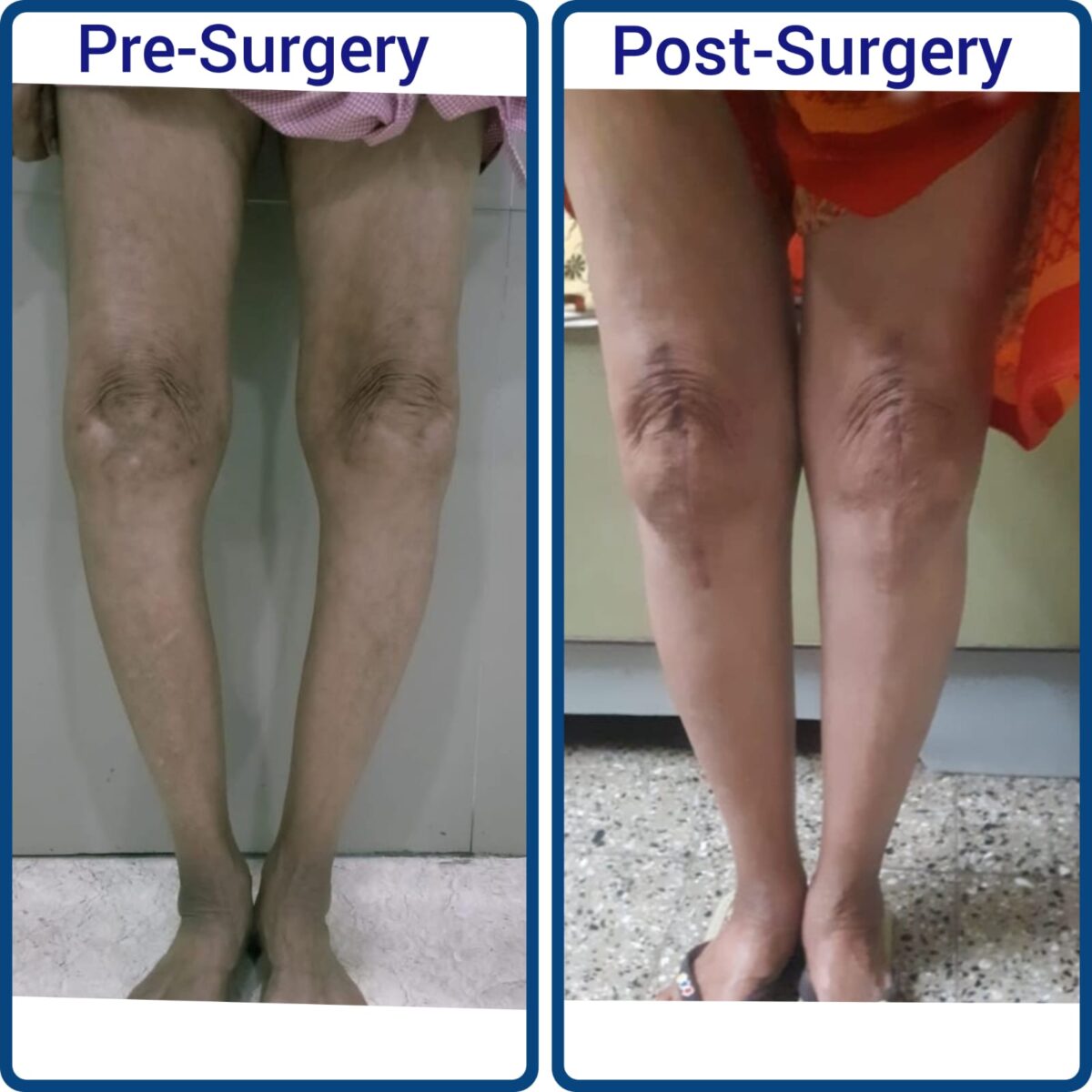Patient Background
A 76-year-old female had been suffering from severe bilateral knee pain for the past 12 years. The chronic pain was impacting her mobility and quality of life, making daily activities increasingly difficult. After a thorough examination and detailed counseling with the patient and her family, the medical team recommended a total knee replacement for both knees in a single procedure.
Decision for Surgery
Given the patient’s long-standing knee pain and limited mobility, total knee replacement was deemed the best course of action. This procedure would not only alleviate the pain but also restore her ability to walk and perform routine activities comfortably. The patient and her family were well-informed about the process, risks, and recovery expectations before moving forward.
Preoperative Care
The patient was admitted one day prior to the surgery for preoperative evaluations and preparation. After ensuring she was in optimal condition, the surgical team proceeded with the scheduled bilateral total knee replacement the following day.
Surgical Procedure: Minimally Invasive Sub-Vastus Approach
The surgical team used a Minimally Invasive Sub-Vastus Approach, which is particularly advantageous for knee replacement surgeries. This technique avoids cutting through major muscles, leading to:
- Faster Recovery: Muscle-sparing techniques allow patients to regain mobility quicker.
- Reduced Postoperative Pain: Less trauma to muscles means less pain after surgery.
- Minimized Scarring: The incision is smaller, resulting in a shorter and less noticeable scar.
The surgery took a total of 2.5 hours, during which both knees were successfully replaced.
Immediate Postoperative Recovery
The patient’s recovery was smooth and complication-free. She was:
- Shifted directly to her room, without requiring admission to the ICU, reflecting the minimally invasive nature and low risk of complications with the chosen surgical approach.
- Walking on the same day of surgery: With the aid of a walker, she was able to stand and take steps just hours after the procedure.
Postoperative Care and Discharge
The patient was discharged on Day 3, after demonstrating stable progress. She continued to receive physiotherapy at home, which focused on regaining strength and movement in the knees. Impressively, by the third day after surgery, she was walking independently without any support and showing remarkable confidence in her movements.
Follow-Up and Full Recovery
- Sutures were removed on Day 14, marking another significant milestone in her recovery.
- Within two weeks, the patient returned to her normal life without the need for any assistance, enjoying pain-free movement for the first time in over a decade.
Conclusion
This case highlights the life-changing benefits of bilateral total knee replacement using a minimally invasive, muscle-sparing approach. The patient’s swift recovery, early mobility, and return to normal life demonstrate how modern surgical techniques can significantly improve the outcomes for elderly patients.
If you’re suffering from chronic knee pain and wondering if knee replacement is right for you, consult our orthopedic specialists to explore your options.
Key Hashtags
#KneeReplacement #MinimallyInvasiveSurgery #OrthopedicSurgery #BilateralKneeReplacement #SeniorHealth












